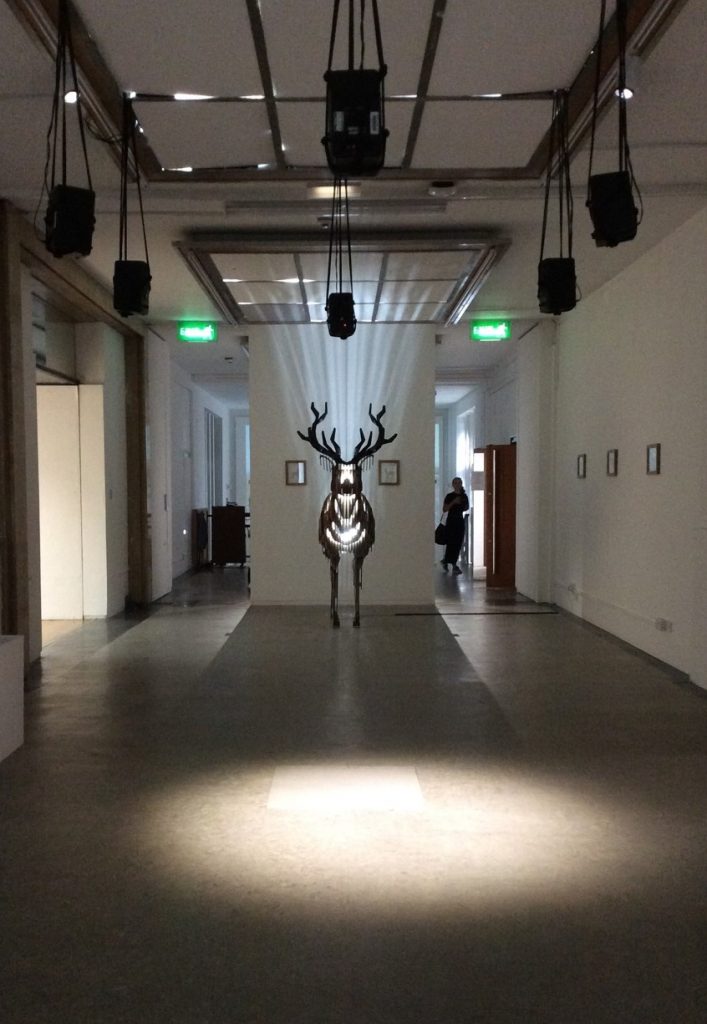DJCAD MASTERS SHOW 2017: MFA ART, SOCIETY & PUBLICS

“Art begins outside the gallery” – Josh Cavanagh’s stag.
The MFA Arts, Society and Publics end of year show brings together a diverse group of creatives working in a multitude of different artistic areas for a unique group show. The students on the MFA course are from varied backgrounds and experiences. The course enables these individuals to share knowledge with peers whilst working with tutors to develop their individual practices through an examination of current societal issues, varied audiences and the overall role the artist can play.
On entering this year’s show, we were greeted with a sound installation: The People’s Story, from artist Lise Olsen. Standing under the spotlight, surround by suspended speakers, I felt overwhelmed by the noise around me and found myself trying to decipher any sense in the inane words. Olsen’s piece aims to create an experience of the “in-between”; the project was successfully achieved while Olsen was on placement with McManus Museum and Galleries. The project involved working with community groups, opening dialogues and discussion to create an augmented reality; this reality has been simulated in Olsen’s MFA piece.
The visual impact on entering the space is provided by a scale model of a fully grown stag, crafted from wood and LED lights, by artist Josh Cavanagh. Cavanagh’s practice is concerned with public art, developing a relationship between art, nature and the audience. He describes his work as permanent and semi-permanent site-specific art. His ethos is “Art begins outside the gallery”, which is somewhat contradicted by his displayed frame drawings, which are more representational of a traditional gallery format.

One of Lyndsey Gibb’s doctored maps.
Featured in the Upper Cooper gallery is work by artist and printmaker Lyndsey Gibb. In the gallery space, we are presented with several altered maps displayed in different ways. The scale of Gibb’s work is what initially drew me in, and once I had approached it I found myself immediately trying to read the maps and make sense of the information provided. They have been altered by obscuring information, such as the text, making it very difficult to read. It is evident that at the centre of Gibb’s practice is her interest in how information is displayed. She experiments with how, by interfering with information, she can change what should be informative documents into mere objects. As a result of these experiments, she has created a thought- provoking collection of objects which are now valued not for the information they provide but purely on their aesthetic appeal.
In keeping with the theme of the course, the show encompasses public events throughout its duration, both on-site in the Crawford building and off-site in public spaces in the city. These events vary from artists’ talks, performances and music to walking tours and opportunities for discussions with the artists.
This year’s show is extremely diverse. With video and sound artists, activist art, sculpture, performance artists, typographical artists and printmakers creating dresses, books, light installations and printed works there is plenty to see, read and experience: one visit to the show is not enough. Overall, the work in this year’s show is engaging and thought-provoking, challenging its viewers to consider the relationships between artistic practice and its audience, and the wider context of art’s place in society.
Katie Parkin

Leave a Reply